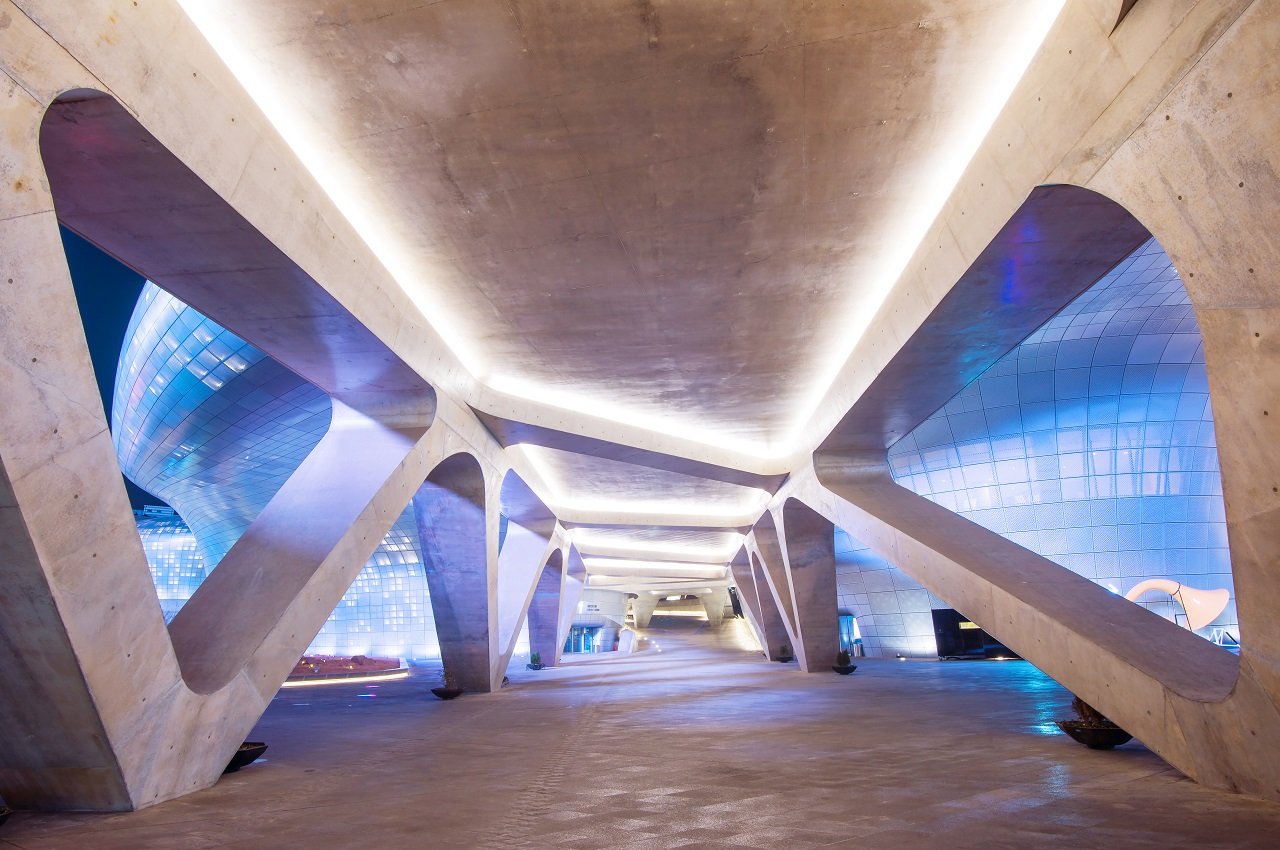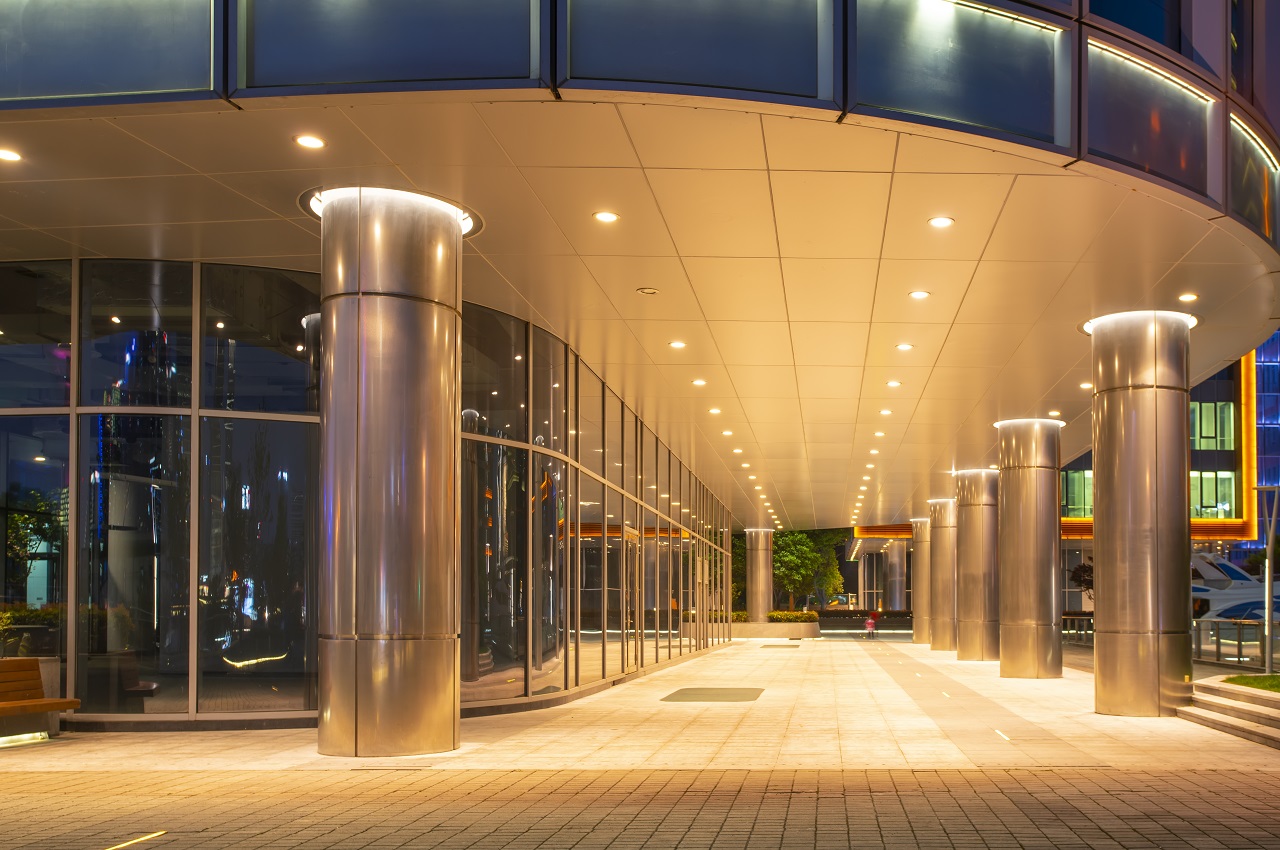When designing their dream home, people usually pay attention to the furniture, choice of bathroom fixtures, roofing, etc. But they often forget about one of the most important design elements – lighting.
No matter how you decorate a space, it will only have the desired impact if the lighting is good. That said, not all spaces need high illumination, and balancing light and shadows is crucial.
Today’s guide discusses architectural lighting and why it’s important.
What Is Architectural Lighting?

“One may say that architecture is the thoughtful making of spaces…It is the creation of spaces that evoke a feeling of appropriate use.” – Louis Kahn.
After reading Louis Kahn’s quote, you may wonder how to ensure the “appropriate use” of space in architecture. Is it through interior design, the placement of furniture, or the size of the room?
The answer is more simple than you think – it’s lighting design. This is why some of the top architecture companies have lighting designers to help with different types of lighting to add value to a space.
Proper lighting in a commercial or residential space helps improve a person’s mood, allows people to see, enhances safety, amplifies architectural features, and improves productivity. But thanks to more creativity and innovation in lighting design trends, it’s possible to transform the look of a room.
You can impart visual comfort, set the tone, and draw attention to different colors or textures while playing upon the perception of shape and size.
Importance Of Architectural Lighting
“Each space must be defined by the structure and character of its natural light.” – Louis Kahn.
Taking a page from Louis Kahn’s ideas on architectural lighting, let me assume you have a small room. To enhance the emotional value and visual impact of the space, paint the walls in a light color and make sure extra LED lighting reflects off the walls to make the room appear bigger.
Even general lighting in a room has been proven to improve concentration, mood, and well-being. That’s why a room having sufficient light sources is usually associated with higher energy levels and warmth.
Meanwhile, poor lighting fixtures often result in eye strain, headaches, or depression. But planning is crucial for achieving the desired effect through exterior lighting, smart lighting systems, indirect lighting, etc.
In a home, the lighting should have a welcoming effect, whereas an office must focus on productivity. The architectural lighting and space must complement each other, which will help justify Norman Foster’s statement: “Architecture is an expression of values.”
Architectural Lighting Design In Commercial Applications
Having a team of professional architectural lighting designers will help you choose the right LED lights for any space. Thanks to creative designs, modern trends, technical advancements, and safety requirements, the latest LED bulbs help highlight architectural features to make any space stand out.
Here I have shortlisted the most common light fixtures that have positive psychological and physiological effects in a space.
1. Cove Lighting
A lighting designer often uses cove lighting by mounting it to a wall or ceiling. The light draws attention to a picture on the wall or crown molding and is a type of soft lighting. I have used this lighting to create a peaceful environment in my meditation room.
You can also use this architectural lighting design in your home gym as an ambient lighting technique, especially if you want to avoid direct lighting. Moreover, the LED light is hidden within the wall or ceiling, which makes the space appear more sleek and aesthetic.
2. Ambient Lighting
Ambient lighting is an interesting architectural element for overall illumination and to create a uniform lighting level. In most cases, ambient luminescence is soft and equipped with dimmable settings for day and nighttime lighting.
This architectural lighting helps improve a building’s aesthetic and proves most effective in stairs or hallways for maximum visibility and orientation. I have also installed these lights in my home office and kitchen using wide beams to deliver consistent illumination.
Common ambient lighting types include –
- Recessed or ceiling-mounted fixtures direct light downwards
- Pendants or floor lamps bouncing light off walls
- Wall sconces for brighter illumination
3. Accent Lighting
You can highlight a particular area or object with accent lighting, which is three times brighter than ambient lighting. This architectural lighting draws attention to visual arts and designs, ensuring these are the focal points in any room.
For the best results, use adjustable fittings and direct the illumination over small areas or objects. In other words, accent lighting is more unique since it creates a point of interest, which makes it more aesthetic.
You will be able to add a dash of drama to any space, such as entrances, living rooms, and gardens. Some examples of accent lighting include –
- Recessed spot light
- Wall lights
- Wall-mounted picture lights
- Track lighting
4. Task Lighting
Task lighting uses direct light for greater illumination to create more visual interest surrounding detailed task work, like writing or reading at the desk. You can also install task lighting at the dressing table for grooming and in the kitchen while preparing food.
I like that the focal glow is directed over a specific area to help you perform better, ensuring it’s more visually revealing than ambient lighting. Best of all, task lighting reduces eye strain, is glare-free, and guarantees energy efficiency.
Here are a few popular accent lights –
- Pendants
- Recessed lighting
- Track lighting
- Floor, desk, table, and fluorescent lamps
- Under-cabinet lighting
- Bathroom vanity lights
5. Uplighting
Like cove lighting, uplighting is an indirect lighting technique that creates visual interest in various structural features on the ceiling, like steel beams. Uplighting is an architectural lighting design that directs light upwards to enhance the space and feel of a room by minimizing glare.
This architectural lighting design is most useful for reducing shadows and dark spots in interior spaces. Hence, you can create a mood relevant to the space and successfully balance appeal and comfort.
6. Surface And Suspended Lighting
This is one of the most popular forms of architectural lighting, owing to its versatility and ability to highlight various architectural elements. For instance, if you have a fitness studio, architects focus on using linear LED surface lighting systems to create the impression of traveling through space.
In other words, this artificial lighting technique improves one’s ability to differentiate between spaces for an elevated experience.
7. Natural Lighting
“A plan of a building should read like a harmony of spaces in light.” – Louis Kahn.
One of the best ways to create the “harmony of spaces” Louis Kahn talks about is through natural light, also known as daylight. When enough natural light filters into your room, it reduces the need for artificial lighting and increases energy savings.
Owing to natural light, the health, comfort, and mood of the occupants may improve while adding added value to architecture. There are 4 types of natural light in architecture –
- Zenith light
- Direct lighting
- Uniform and diffuse light
- Reflected light
8. Linear Recessed Lighting
Linear recessed lighting uses LED lights in clean, straight lines to form a seamless connection between the wall and ceiling. This LED lighting system is most popular in office spaces looking to build an environment for greater productivity, creativity, and alertness.
Thanks to technological advances in architectural design, you can create a linear design, but that standard length is 4 feet or 8 feet. The lighting is recessed into the wall, floor, or ceiling to deliver balanced lighting and accentuate modern interiors.
Why Is Natural Light Integral To Architectural Lighting?
Instead of complicated design features, it would be best to use natural light due to its dynamic and ephemeral nature. Light embodies time, highlighting the hours of the day and night and the changing seasons.
Daylight helps people connect with their surroundings, including the climate and ecological phenomena of the place. Most importantly, it delivers many health benefits provided you can implement proper solar and bioclimatic design strategies.
This architectural lighting is most appreciated for interacting with different elements and playing with various perspectives, such as buildings, surface textures, forms, materials, reflectivity, and hues. It proves energy efficient for practical purposes, but for tingling the optic nerves, daylight embodies the changing outdoor setting.
As the intensity of daylight changes, it impacts your senses and your relationship with the world. Louis Kahn rightly said, “Even a space intended to be dark should have just enough light from some mysterious opening to tell us how dark it really is.”
Daylight Design Trends
Some popular design trends in architectural lighting include –
- New technologies and construction materials
- Modern digital tools and design methods
- More knowledge about the science of daylight
Moreover, I can categorize daylight into the following profiles –
- Integrated light
- Choreographed light
- Material light
- Atmospheric light
- Structured light
- Sculpted light
But the thing to note about this architectural lighting method is that daylight is multi-faceted, complex, unpredictable, and, at times, messy. While reading a book on architectural lighting, I came across a quote from Alvar Aalto, which reminds readers that architecture is still a synthetic process.
“Its essence can never become purely analytical. Its purpose is still to bring the world of matter into harmony with human life.” This should remind designers who overanalyze how to use daylight through state-of-the-art tools rather than relying on their instincts.

Conclusion
Architectural lighting design goes beyond the basic principles of only illuminating a space for safety and clear vision. It’s an intricate and indispensable design technique that can enhance or lower the feel of a room, depending on how you use it.
Proper attention to lighting can increase productivity and create a comfortable environment. You can even mix and match many of the design techniques I have mentioned here to raise the property’s valuation. So, contact a professional for a proper electrical wiring guide.
But always ensure there is sufficient daylight to reduce electricity costs and create the right mood.


